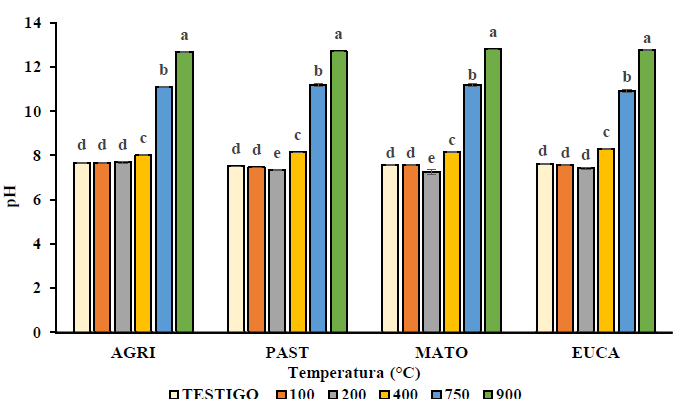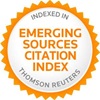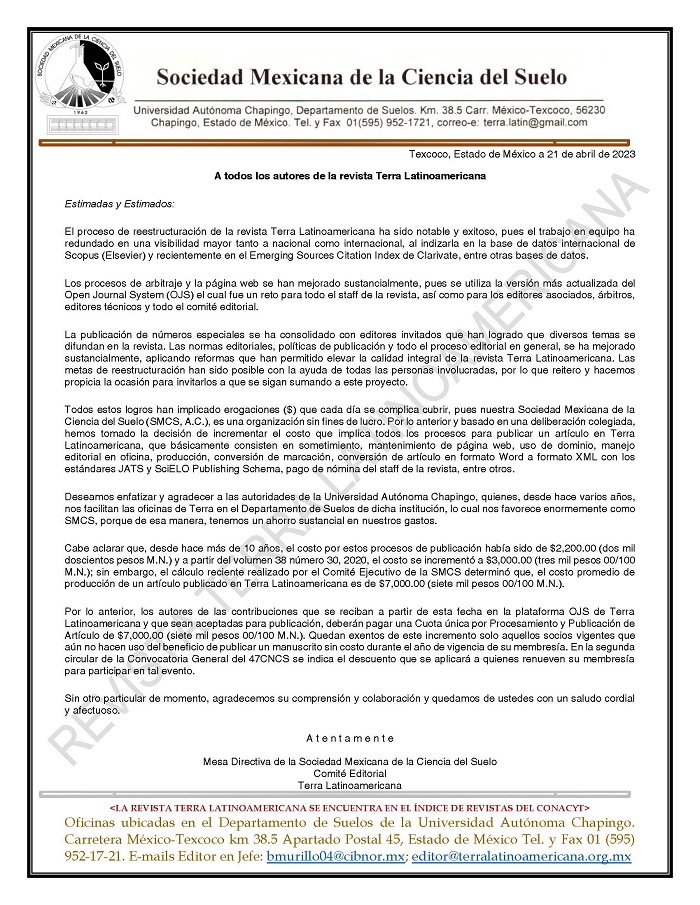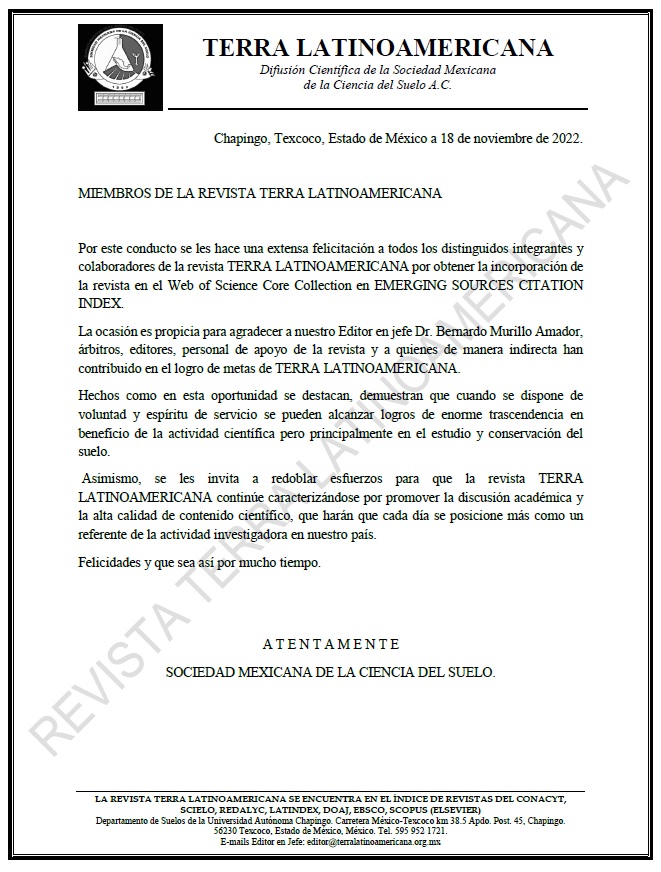Hydrophobic Ef fects in Soils Burned at Dif ferent Intensities
DOI:
https://doi.org/10.28940/terralatinoamericana.v43i.1965Keywords:
ash, forest fire, burn intensity, water repellency, Vertisol soilAbstract
The high temperatures to which the soil is exposed during a forest fire generate diverse ef fects that af fect soil quality. The present investigation analyzes the chemical properties of four land use systems of a Vertisol exposed to dif ferent burning intensities (205, 200, 400, 750 and 900 °C) with emphasis on the property of hydrophobicity. The determination of soil water repellency persistence was carried out through the water drop penetration time (WDPT) methodology, pH by the AS-23 method of the NOM-021-RECNAT-2000, organic matter (OM) by the Walkley and modified Black method and electrical conductivity (EC) by the 1:5 soil - water ratio method. The results indicate that the increase in temperature significantly decreased hydrophobicity in the four soil use systems; On the other hand, the hydrogen potential (pH) and EC showed an increase. These values are associated with the combustion of OM, which generated ash that contributes oxides, basic cations and substances of a
hydrophilic nature.
Downloads
Publication Facts
Reviewer profiles N/A
Author statements
- Academic society
- Terra Latinoamericana
- Publisher
- Mexican Society of Soil Science, C.A.

















